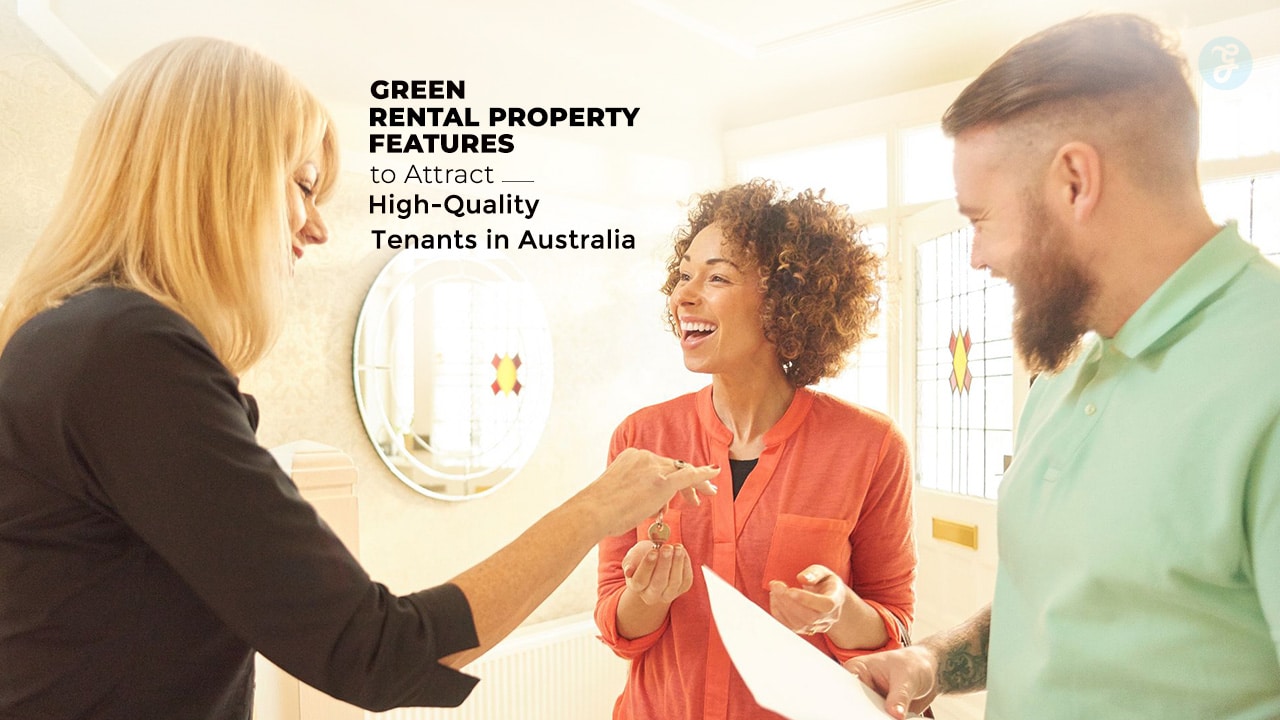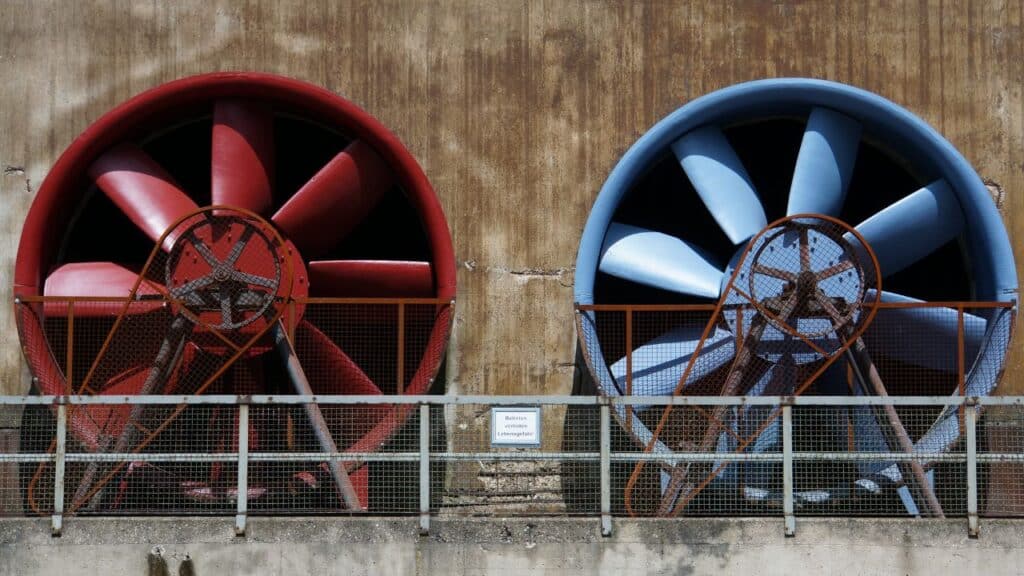As sustainability continues to shape the way we live, the rental market is not immune to the growing demand for eco-friendly living spaces.
Tenants are now more aware of the environmental impact of their homes and seek out properties that align with their values, prioritizing green features that contribute to energy conservation, reduced waste, and improved health.
For landlords, investing in green rental property features offers significant advantages, including attracting high-quality tenants, lowering operational costs, and future-proofing their properties.
In this article, we’ll explore 12 Green Rental Property Features in Australia that not only help create an eco-friendly living space but also make your property more appealing to prospective tenants. These features will enhance tenant retention, improve your bottom line, and ensure your property stands out in a competitive market.
Why Green Rental Property Features in Australia Matters?
Australia is experiencing a growing trend toward sustainable living. According to the Australian Bureau of Statistics, nearly 70% of Australians believe that reducing the environmental footprint of homes is important. Moreover, a survey by Finder found that 1 in 3 Australians are willing to pay a premium for an energy-efficient home.
Sustainable living isn’t just a passing trend; it’s becoming a key factor in the decision-making process for renters. Offering green rental property features in your property not only attracts eco-conscious tenants but also helps landlords reduce long-term operating costs and improve their properties’ marketability.
Incorporating green rental property features can create a healthy, energy-efficient, and environmentally responsible living space, which directly benefits both landlords and tenants. Let’s explore how you can incorporate these 12 key features into your rental property.
1. Energy-Efficient Appliances and Lighting
One of the most impactful changes you can make to your rental property is upgrading to energy-efficient appliances and lighting. These features reduce electricity consumption, lower tenant energy bills, and significantly reduce the carbon footprint of the property.
Benefits of LED Lighting in Rental Properties
LED lights use up to 75% less energy compared to traditional incandescent bulbs and last much longer. Replacing conventional lighting with LED bulbs helps decrease electricity consumption and reduce carbon emissions, benefiting both the landlord and tenants.
| Feature | LED Bulbs | Incandescent Bulbs |
| Energy Efficiency | 75% less energy use | Higher energy consumption |
| Lifespan | Lasts 25 times longer | Shorter lifespan |
| Annual Savings | Average savings of $50 per year per tenant | Higher annual energy costs |
Installing Energy-Efficient Appliances
Modern, energy-efficient appliances—such as refrigerators, dishwashers, and washing machines—use less electricity and water. For example, Energy Star-rated appliances can reduce energy use by 30% or more. These upgrades not only make your property more sustainable but also attract tenants who want to save money and reduce their environmental impact.
Real-Life Insight: In a study by the Property Council of Australia, properties with energy-efficient appliances and lighting saw a 10-15% increase in tenant retention rates.
2. Solar Power Integration
The integration of solar energy is one of the most significant green rental property features you can add to your rental property. Solar panels provide tenants with the opportunity to generate their own electricity, significantly reducing energy bills.
How Solar Panels Can Enhance Property Appeal
Solar power is increasingly popular as energy prices rise. Installing solar panels can reduce electricity costs by up to 50%. Additionally, tenants appreciate having access to renewable energy, which aligns with their sustainability values.
The Environmental Benefits of Solar Energy
Solar energy is clean and renewable. According to the Clean Energy Council of Australia, over 2.7 million homes in Australia are now powered by solar energy. Solar power is key to reducing greenhouse gas emissions, which directly contributes to a healthier environment.
Data Insight: According to Solar Choice, homes with solar power can see property value increases of up to 4%. Additionally, properties with solar panels are expected to have higher rental yields, making them a smart investment.
3. Sustainable Water Systems
Water conservation is essential, especially in regions prone to drought. Installing sustainable water systems can help reduce the environmental footprint of your property and lower water bills for tenants.
Water-Efficient Fixtures and Fittings
Low-flow toilets, showerheads, and faucets are essential for reducing water consumption. Water-efficient fixtures can reduce water usage by 50% or more, making them a key feature for environmentally conscious renters.
| Water-Efficient Feature | Water Use Reduction | Annual Savings for Tenants |
| Low-Flow Toilets | Reduces water usage by up to 50% | $100-$150 annually |
| Low-Flow Showerheads | Saves up to 30% water per shower | $50 annually |
Rainwater Harvesting Systems
A rainwater harvesting system collects water from the roof, which can be used for non-potable purposes like irrigation or toilet flushing. This reduces reliance on the municipal water supply, lowering water bills for tenants and promoting sustainability.
Example: In Melbourne, the City of Melbourne offers incentives for property owners who install rainwater harvesting systems, making it an affordable green upgrade.
4. Insulation and Proper Ventilation
Proper insulation and ventilation help maintain a comfortable indoor climate year-round. These green rental property features reduce the need for artificial heating and cooling, leading to lower energy costs and a more pleasant living environment.
Importance of Ceiling and Wall Insulation
Ceiling and wall insulation are essential for minimizing heat loss in the winter and keeping properties cool in the summer. Well-insulated properties require less energy for heating and cooling, saving tenants money on their utility bills.
| Insulation Type | Energy Savings | Annual Savings for Tenants |
| Ceiling Insulation | Reduces heat loss by up to 30% | $200-$300 annually |
| Wall Insulation | Reduces heating/cooling costs by 20% | $150-$250 annually |
Ventilation Systems That Enhance Indoor Air Quality
Good ventilation helps improve indoor air quality, remove moisture, and reduce allergens. Heat recovery ventilation (HRV) systems are particularly beneficial, as they exchange stale indoor air for fresh outdoor air while recovering heat from the outgoing air.
Practical Tip: If you’re renovating, consider adding mechanical ventilation systems or installing windows that can open easily for natural airflow.
5. Green Roofing and Passive Cooling
Green roofs and passive cooling techniques are gaining popularity in Australia’s urban areas, helping properties maintain a comfortable temperature naturally.
Green Roofs for Urban Apartments
A green roof is a layer of vegetation installed on the roof of a building. It acts as natural insulation, reducing the need for air conditioning in hot weather and providing additional green space. Studies show that green roofs can reduce indoor temperatures by up to 5°C, significantly lowering cooling costs.
Passive Cooling Techniques
Passive cooling uses natural resources, such as wind, shading, and thermal mass, to maintain comfortable indoor temperatures. Techniques like cross-ventilation and reflective surfaces can reduce the reliance on air conditioning, saving energy and providing a more comfortable living environment.
| Passive Cooling Feature | Cooling Impact | Energy Savings |
| Green Roofs | Reduces temperature by up to 5°C | Cuts cooling costs by 20% |
| Cross-Ventilation | Natural cooling and air circulation | Reduces AC usage by 30% |
6. Eco-Friendly Building Materials
Using sustainable materials helps minimize the environmental impact of your property. These materials, such as recycled or rapidly renewable resources, reduce the overall carbon footprint and contribute to a healthier indoor environment.
Benefits of Using Recycled or Low-Impact Materials
Materials like recycled steel, reclaimed wood, and natural fibers help reduce the need for new resources. These materials are durable, cost-effective, and contribute to a property’s overall sustainability credentials.
Sustainable Flooring Options
Bamboo and cork flooring are excellent alternatives to traditional hardwood. Bamboo is a fast-growing, renewable resource, while cork is harvested from the bark of trees without harming the tree itself.
Real-Life Insight: The Australian Green Building Council (AGBC) highlights that using sustainable materials in your property can increase its market value by up to 10% due to the growing demand for eco-friendly buildings.
7. Waste Management and Recycling Facilities
Proper waste management is essential for reducing the environmental impact of your property. Providing tenants with easy access to recycling facilities encourages them to reduce waste, promoting sustainability.
Creating Tenant-Friendly Recycling Spaces
Ensure that each unit has access to clearly labeled bins for recycling paper, plastic, glass, and organic waste. Set up central collection points for large items and provide tenants with guidance on proper waste separation.
Smart Waste Disposal Systems
Consider installing compactors, sorting technology, or even smart waste bins that notify when they need to be emptied. These systems improve the efficiency of waste management and reduce the need for frequent pickups.
| Waste Management Feature | Benefit | Impact on Tenants |
| Recycling Bins | Easy waste separation | Encourages recycling habits |
| Smart Waste Bins | Efficient waste management | Reduces overflow and costs |
8. Creating Outdoor Green Spaces
Outdoor green spaces offer tenants a place to relax and enjoy nature while contributing to a property’s sustainability. These spaces can range from community gardens to eco-friendly landscaping.
Community Gardens and Green Zones
Community gardens foster a sense of community and allow tenants to grow their own food. These green spaces also reduce the urban heat island effect, providing cooling benefits during hot weather.
Green Landscaping for Outdoor Appeal
Planting native, drought-resistant plants helps reduce water consumption and create visually appealing outdoor areas. Native plants also require less maintenance and can support local wildlife.
9. Green Building Certifications
Green certifications, such as NABERS and Green Star, validate your property’s commitment to sustainability and improve its marketability.
Benefits of Green Building Certifications
Properties with certifications like Green Star are proven to be more energy-efficient, have better indoor air quality, and use fewer resources, all of which contribute to a higher tenant satisfaction rate.
10. Smart Home Features
Smart home technology is becoming a crucial aspect of green living. Features such as smart thermostats and energy management systems help tenants optimize their energy consumption.
Smart Thermostats and Energy Management
Smart thermostats learn the tenants’ habits and automatically adjust the heating or cooling to ensure maximum efficiency. This reduces energy consumption and helps tenants save on heating and cooling costs.
Smart Lighting and Automation
Smart lighting can be set to turn on and off automatically, reducing unnecessary energy use. Automation features allow tenants to control the lighting, temperature, and appliances remotely.
11. Electric Vehicle Charging Stations
As electric vehicles (EVs) become more popular, providing charging stations at your property is an essential feature that appeals to eco-conscious tenants.
Installing EV Charging Stations
Providing EV charging infrastructure adds value to your property and attracts a growing segment of tenants who drive electric cars. The installation of charging stations can also future-proof your property as EV adoption continues to rise.
12. Tenant Education and Engagement
Educating tenants about sustainable living practices can help them make better choices and reduce their environmental impact.
Providing Eco-Friendly Guides
Provide tenants with information about how they can reduce energy use, recycle effectively, and contribute to sustainability. Offering eco-friendly tips, especially for new tenants, can help them integrate green practices into their daily lives.
Final Thoughts: The Future of Green Rental Properties in Australia
As Australia continues to embrace sustainability, green rental property features are no longer just a luxury—they are a necessity for attracting high-quality tenants.
By incorporating energy-efficient systems, water-saving features, and eco-friendly building materials, landlords can create attractive, sustainable rental properties that benefit both the environment and the bottom line.
Investing in green rental property features in Australia offers long-term advantages, including lower operating costs, improved tenant retention, and a higher market value.
Whether you’re starting with small upgrades or committing to a full green transformation, these features will help future-proof your property and ensure it stands out in an increasingly competitive rental market.





































